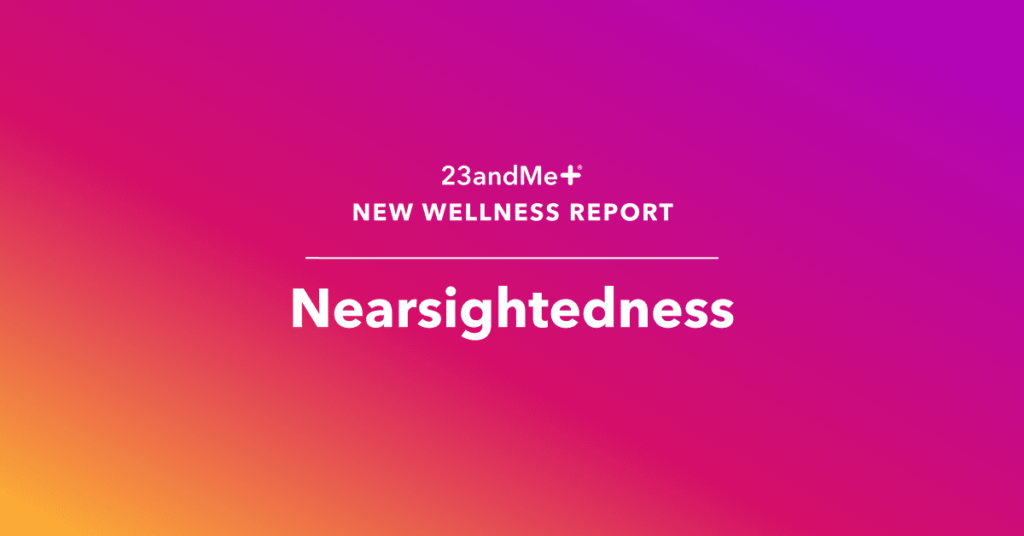The number of people who are nearsighted, who need glasses to see distant objects clearly, has risen dramatically over the last 50 years.
Known as myopia, nearsightedness is quite common, and occurs when the shape of the eye is elongated or the cornea of the eye is angled in a way that prevents the eye from focusing light properly. It’s estimated that about 45 percent of adults in the U.S. aged 20 and older are nearsighted. In many parts of East Asia, the rates are much higher than that.

23andMe+
This week, we released a new 23andMe+ report (Powered by 23andMe Research) that looks at a person’s likelihood of being nearsighted and provides information about the condition as well as ways to protect your vision.
The new report uses machine learning techniques to estimate a person’s likelihood of being nearsighted. To make that estimate, we use a statistical model that includes more than 2,700 genetic variants, and also takes into account a person’s ethnicity and birth sex. Most cases of nearsightedness actually develop during childhood and then stabilize during adulthood.
Besides genetics, other factors like age, family history, and ethnicity all play a role in the likelihood of developing myopia. But research funded by the NIH’s National Eye Institute suggests that the rapid rise in cases is most likely related to lifestyle changes. More children spending more time indoors, for instance, or spending more hours doing “near work” like reading, or looking at computer screens or smartphones, may all contribute to the increase.
Nearsightedness develops as changes in eye shape move the focal point of our vision. Light from an object in our field of vision is focused first by the cornea and lens onto the retina, which is in the back of our eyeball and sends a signal to the brain. When the shape of the eye changes so the focal point is moved in front of the retina instead, distant objects appear blurry.
Research
23andMe scientists have contributed to research looking into genetic associations for nearsightedness, including a 2020 study that found that genes involved in circadian rhythm are also associated with nearsightedness.
Data from more than 100,000 23andMe customers who consented to participate in research were also used in a massive 2018 study that identified 8,000 genetic variants associated with nearsightedness. Other 23andMe research into the genetic basis for the condition go back almost a decade.
Taking Action
Although encouraging children to spend more time outdoors has been one approach to try and stem the rise in nearsightedness, experts do not yet agree on what other lifestyle changes can help prevent or slow its progression.
However, they do agree that healthy lifestyle habits can lower the chances of developing other eye conditions. Among those habits are regular eye exams, wearing sunglasses to block UV light, and taking breaks from near-work or computer screen time to avoid eye strain. A healthy diet and exercise can also help by lowering the likelihood of developing conditions like high blood pressure or diabetes, which can damage one’s vision.
More
23andMe’s new Nearsightedness report (Powered by 23andMe Research) is available to all 23andMe+ members. To learn more about your report, go here.
Not yet a 23andMe+ member? Find out more here.
*The 23andMe+ Nearsightedness report is based on 23andMe research and incorporates more than 2,700 genetic variants to provide information on the likelihood of being nearsighted. The report does not account for lifestyle or family history and has not been reviewed by the US Food and Drug Administration.



